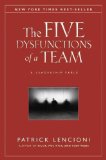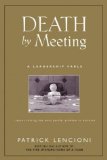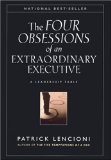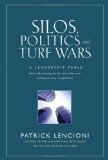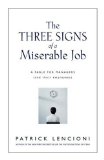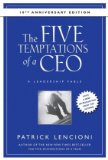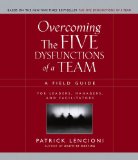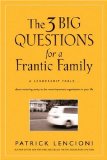Indra Nooyi is the Chairperson of the Board and Chief Executive Officer (CEO) of PepsiCo., the world’s fourth largest food and beverage company. Nooyi has been named the #1 Most Powerful Business Woman in the world in 2006 and 2007 by Fortune Magazine. According to the polls Forbes magazine conducted, Nooyi ranks third on the 2008 list of The World’s 100 Most Powerful Women. She was also named one of America’s Best Leaders of 2008 by U.S. News & World Report. Today, Indra Nooyi presides over 185,000 PepsiCo employees in nearly 200 countries.
Indra was born in Chennai, Tamil Nadu, India in 1955. Her father worked at the State Bank of Hyderabad and her grandfather was a district judge. She completed her schooling in Madras, India. She went on to earn her Bachelor’s degree in chemistry from Madra Christian College in 1974 and immediately entered the PGDBA (Post-Graduate Diploma in Business Administration) program at the Indian Institute of Management, Calcutta. After graduating from IIM-C in 1976 with a Master’s degree in finance and marketing. She worked in India and played lead guitar in an all-women rock band in her hometown of Madras, India.
Against her parents’ advice, she came to the United States in 1978 at age 23 to earn her M.B.A. in Public and Private Management at Yale where she worked as a dorm receptionist—opting for the graveyard shift because it paid an extra 50 cents per hour. She also played cricket in college and sang karaoke at corporate gatherings. Her parents thought she should have stayed in India, gotten married and raised at a family. “I always had this urge, this desire, this passion,” she once explained, to “settle in the United States,” where she is now the married mother of two daughters.
After earning her Master’s degree from Yale in 1980, Nooyi started at The Boston Consulting Group (BCG). From there she moved on to strategy positions at Motorola and ABB. She then went on to become the Senior Vice President of Strategy and Strategic Marketing for Asea Brown Boveri (ABB—the world’s largest builder of electricity grids) and Vice President and Director of Corporate Strategy and Planning at Motorola. She also had stints at Mettur Beardsell (textiles) and Johnson & Johnson.
Nooyi came to PepsiCo in 1994 as the company’s chief strategist. From the start, she helped executives make some tough decisions. She played a vital role in starting Tricon, which is currently known as Yum Brands, Inc. Seeing less future in fast food, she moved the company to shed KFC, Pizza Hut, and Taco Bell in 1997, arguing PepsiCo couldn’t bring enough value to the fast food industry.
Betting instead on beverages and packaged food, she helped engineer a $3 billion acquisition of Tropicana in 1998 and a $14 billion takeover in 2001 of Quaker Oats, maker of Gatorade. The moves proved prophetic choices. Company earnings soared, and so, too, did her stature.
According to BusinessWeek, since she became CFO in 2000, the company’s annual revenues have risen 72%, while net profit more than doubled, to $5.6 billion in 2006.
On August 14, 2006, she was named the CEO of PepsiCo, becoming the fifth CEO in PepsiCo’s 42-year history. By 2006, Nooyi was one of just two finalists to succeed CEO Steven Reinemund as leader of one of the world’s best-known brands. She got the nod in August becoming the fifth CEO in PepsiCo’s 42-year history. She then immediately flew to visit the other contender. “Tell me whatever I need to do to keep you,” she implored. They had worked together for years, both loved music, and Nooyi was persuasive, offering to boost her competitor’s compensation to nearly match her own. He agreed to serve as her right-hand man, creating her version of a team of rivals.
As CEO, she has continued to pursue her unusual, and tremendously ambitious, vision for reinventing PepsiCo. She is now focusing on taking the company from snack food to health food, from caffeine colas to fruit juices, and from shareholder value to sustainable enterprise. That is an ambitious goal which she plans to attain.
In doing so, Nooyi is attempting to move beyond the historic trade-off between profits and people. Captured in her artful mantra—”Performance with purpose”—she wants to give Wall Street what it wants but also the planet what it needs.
By 2010, Nooyi has pledged half of the firm’s U.S. revenue will come from healthful products such as low-cal Gatorade and high-fiber oatmeal. The company will also abandon fossil fuels in favor of wind and solar and will campaign vigorously against obesity.
Nooyi faces many challenges in today’s globally competitive, financially challenging world. If she can lead her organization to the goals she’s established, and her historic record indicates that she can, Nooyi can pretty much choose her next challenge.
With annual revenue of $39 billion, the enterprise she leads is as large as many federal agencies, and moving to run one of those agencies could be her next venture. “After PepsiCo, I do want to go to Washington,” she has said. “I want to give back.”
For all that, Nooyi remains profoundly personal. She told the BBC in March that she calls her mother in India twice a day. “At the end of the day,” said the CEO of one of America’s biggest enterprises, “don’t forget that you’re a person, don’t forget you’re a mother, don’t forget you’re a wife, don’t forget you’re a daughter.” When your job is done, “what you’re left is family, friends, and faith.”
Nooyi is a Successor Fellow at Tale Corporation and serves on the board of several organizations, including Motorola, the Federal Reserve Bank of New York, the International Rescue Committee, and the Lincoln Center for the Performing Arts.
In 2007, she was awarded Padma Bhushan by Government of India. In 2008, she was elected to the fellowship of the American Academy of Arts and Sciences.
In March 2008, Nooyi was elected Chairman of the U.S.-India Business Council (USIBC), a non-profit business advocacy organization representing nearly 300 of the largest U.S. companies doing business in India and two dozen of India’s global companies investing in America. Nooyi leads USIBC’s Board of Directors, an assembly of 25 senior executives representing a cross-section of American industry.
Among her friends are former Secretary of State Henry Kissinger, who describes her as a “wild New York Yankees fan and a caring CEO.” Though raised on cricket, she has become an expert on New York Yankees statistics and Chicago Bulls teamwork. Nooyi is a master of substance, knowing PepsiCo’s product lines and financial metrics in depth.
Keep an eye on this dynamic leader as you are going to hear much more about her in the coming years.
Harry K. Jones is a motivational speaker and consultant for AchieveMax®, Inc., a company of professional speakers who provide custom-designed seminars,
keynote presentations,
and consulting services.
Harry's top requested topics include change management, customer service, creativity, employee retention, goal setting, leadership,
stress management, teamwork,
and time management. For more information on Harry's presentations, please call 800-886-2629 or fill out our contact form.

 Enter Melanie Drake … a very talented and experienced webmaster and AchieveMax® Vice President, boasting more than 15 years of web marketing, graphic design and blog development. During her career, Melanie has served as editor of various publications, such as the Michigan Times and Kwasind literary magazine. She is also the past Director of Publications of the Mid-Michigan Chapter of the American Society of Training and Development (ASTD). Melanie is currently the editor and designer of the articles on the AchieveMax® blog. In short, she makes it all come together.
Enter Melanie Drake … a very talented and experienced webmaster and AchieveMax® Vice President, boasting more than 15 years of web marketing, graphic design and blog development. During her career, Melanie has served as editor of various publications, such as the Michigan Times and Kwasind literary magazine. She is also the past Director of Publications of the Mid-Michigan Chapter of the American Society of Training and Development (ASTD). Melanie is currently the editor and designer of the articles on the AchieveMax® blog. In short, she makes it all come together.
